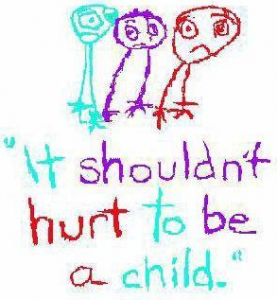
News stations across the US reported about a 6 year old being arrested and charged with with simple assault and damage to property after having a temper tantrum. The report describes a violent outburst: tearing things off the wall, throwing books, toys, and furniture (one which injured the school’s principal). The school chose to have the kindergartner arrested, charged, and left in a jail cell until her mother came to retrieve her.
When I heard the report, I felt the school needed to do something to protect the child, the other children, and adults in the classroom as well. Unfortunately, the school was not able to get in touch with the child’s mother so they called the police. Instead of calling the police a comprehensive assessment and crisis team should have entered the scene. The “tantrum” as described by reporters does not sound like a normal childhood tantrum. On the contrary, this child could be experiencing a violent psychological problem or have anger management issues, which should be evaluated and diagnosed by a clinical professional and not criminalized.
Violent mood swings can be characteristics of some of the medical disorders listed below.
- Bipololar Disorder
- Aspergers
- Autism Spectrum Disorders
- An intellectual disability (such as mental retardation disorder)
- Intermittent explosive disorder
- Schizophrenia
- and others
After hearing the story, I wondered did this school have other options in this situation? Yes, below is a list of other actions that could have taken place.
- Contact trained professionals within the school such as special education staff members or mental health specialist
- Call a mobile crisis team to help defuse the situation
- Or call the local mental health department (This school should already have plans in place to diffuse situations such as this one)
The arrest of this six year old child was a traumatic experience and could cause further problems.
- From this experience the child is at further risk of suffering from Posttraumatic Stress Disorder (PTSD)
- Unfortunately the other kids who witnessed their classmate’s violent outburst and arrest could also suffer from PTSD according to the DSM-IV™ Diagnosis & Criteria. “The essential feature of Posttraumatic Stress Disorder is the development of characteristic symptoms following exposure to an extreme traumatic stressor involving direct personal experience of an event that involves actual or threatened death or serious injury, or other threat to one’s physical integrity; or witnessing an event that involves death, injury, or a threat to the physical integrity of another person; or learning about unexpected or violent death, serious harm, or threat of death or injury experienced by a family member or other close associate (Criterion A1). The person’s response to the event must involve intense fear, helplessness, or horror (or in children, the response must involve disorganized or agitated behavior.” (Source)
- Additionally, the six year old is also at risk for other future adjustment disorders, authority issues, problems with going back into classrooms, etc
The child’s mother was aware of her daughter’s violent mood swings, so the first step of action should have been by her mother, to determine and record when the child’s mood swings occurred before it escalated to this point. Hence, this six year old was sending a plea for professional intervention and help to the other adults in her life. It is imperative that a clinician follow up and evaluate the child to get to the root of what is triggering her explosive outbreaks.
When I heard her story, I thought of Jani Schofield the seven-year-old girl living with childhood Schizophrenia. The Schofield’s, her parents, live a part to help protect their son when their daughter has violent outbursts and voices tell her to do bad things. Jani’s outburst came without warnings and it wasn’t until her parents took her to UCLA’s child psychiatric unit that she was able to get the help she needed.
I am sure no parent wants their child labeled with a disorder, but if there is a medical need then diagnosis should be given followed by treatment.
In this video Jani Schofield describes violent acts of hitting, kicking, outbursts, and throwing things.
The key difference between Jani and this child, is the Schofield’s realized their daughter’s behavior was not normal for a child. It appears that the parent’s of this girl are not getting her the help she needs.
*I felt compelled to write this post after reading comments and articles around the web that suggested this child needs a beating or spanking; on the contrary, this child needs to be diagnosed and treated, not abused.
This post was written in collaboration with Faith Davis, MSW,LCSW,LCAS-P
